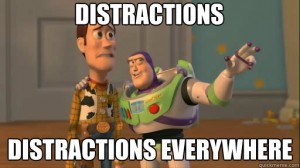I happen to be a voracious reader, as I believe most authors are. While it’s true that my main purpose in reading is for the sheer joy of it, I also learn a lot from other writers. It’s one thing to be able to point to a book and express your appreciation of it; it’s another thing, however, to break it down and be able to analyze the specific things about it that worked so well. The ability to analyze technique is important for any aspiring storytelling.
Over the years, no author has taught me more than George R.R. Martin, through A Song of Ice and Fire. His books are brilliantly conceived and executed on every level. Praise for them is almost universal.
One of the many things I’ve learned from Martin is the art of juggling multiple characters and points of view. The means by which he intertwines his stories requires a deft hand, and over the years I’ve taken note of how he does it. One such method I’ve observed is that even when his characters are divided by entire continents, his novels are held together by powerful overarching themes.
And yet not all readers agree that Martin has successfully managed this aspect of storytelling in the two most recent volumes in his series. After bringing his third novel to the edge of a precipice, his fourth novel has been accused by many fans of being a letdown. Boring. Filler. In fact, if you were to poll Martin’s fanbase, you would probably find that a majority holds this opinion.
So, what happened?
This summer, I dove into a reread of the series. As I was coming to the concluding pages of that dramatic third novel, I came across this, a proposal for combining the fourth and fifth novels of Martin’s series and reading them concurrent with each other. The two books take place at the same time, each of them featuring different sets of characters but both proceeding as direct sequels to Book 3.
I decided to alter my reading plan. Instead of tackling the books separately, I decided to intermix them. Let me just say that my reading experience was educational. In a hundred little ways, it becomes clear that these two books and their disparate storylines were never meant to be disparate at all. They are thematically linked. They play off each other in surprising ways. They inform each other. Together, they form one of the best epic fantasy novels I’ve ever read; separately, they’re serviceable parts of a yet-incomplete whole. In short, there’s nothing boring about them.
To me, this serves as an illustration of the importance of stories complementing each other. Intertwining stories and character arcs is a delicate, sophisticated business, and when you mess with this balance the overall work suffers in ways that can be complicated to pinpoint. A great story is the result of many interlocking pieces.
My current work in progress has six viewpoint characters spread across three or four disparate plotlines (depending on how you count it). In order to shrink my novel to a more manageable length, it was suggested to me that I could extract several storylines and split them into different volumes. I thought about this, then divided the chapters, reorganized the material, and found that while the separate storylines were complete in and of themselves, they weren’t nearly as strong as when taken together.
Incidentally, if you feel the individual storylines in your work in progress could stand on their own two feet without the support of the larger volume, you may want to ask yourself whether or not these storylines are as strong as they could be. Perhaps the more interdependent and symbiotic the various aspects of a novel are, the better. In the future, I know I’ll be using the so-called Martin Effect as a gauge.



